 |
|
Psyche (Falcon Heavy) 13 October 2023 |
Launch Complex 39A Kennedy Space Center |
A SpaceX Falcon Heavy rocket launched NASA's Psyche mission to an interplanetary transfer orbit from Launch Complex 39A (LC-39A) at NASA’s Kennedy Space Center at 10:19 a.m. on 13 October 2023. Following stage separation, Falcon Heavy’s two side boosters landed on Landing Zones 1 and 2 (LZ-1 and LZ-2) at Cape Canaveral Space Force Station. The Psyche spacecraft will travel to a metal-rich asteroid of the same name orbiting the Sun between Jupiter and Mars in pursuit of studying the exposed nickel-iron core of an early planet, one of the building blocks of our solar system. The mission will also demonstrate NASA’s first deep space test of the Deep Space Optical Communications (DSOC) system – high-bandwidth optical communications through space and back to Earth – from distances far exceeding the Moon – using a near-infrared laser. This will be the fourth launch for the side boosters, both of which previously supported USSF-44, USSF-67, and Hughes JUPTER 3. |
|
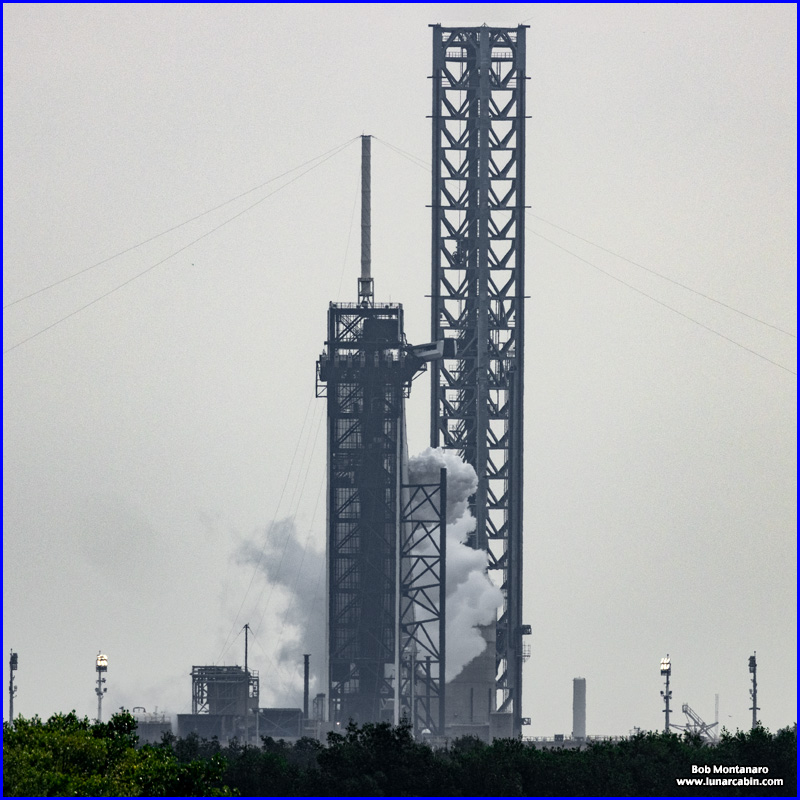 |
|
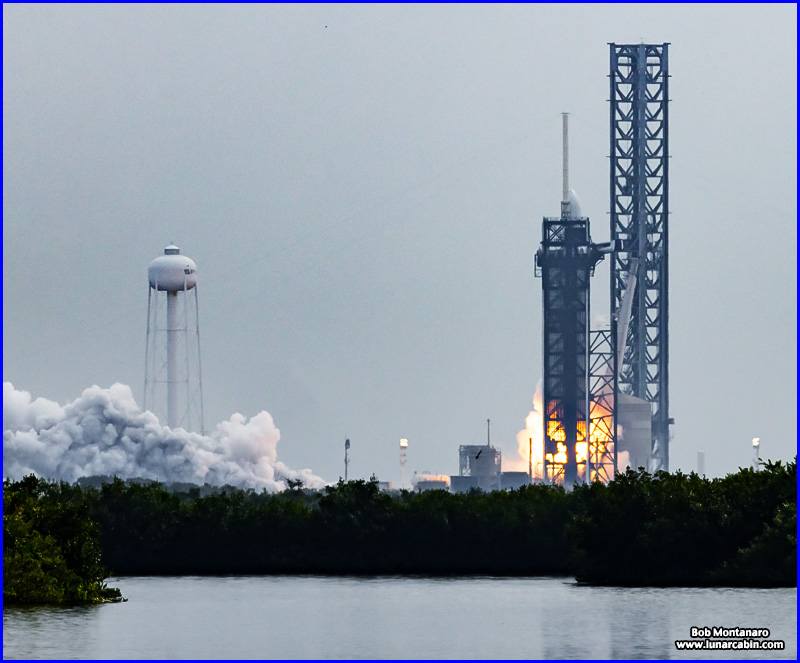 |
|
 |
|
 |
|
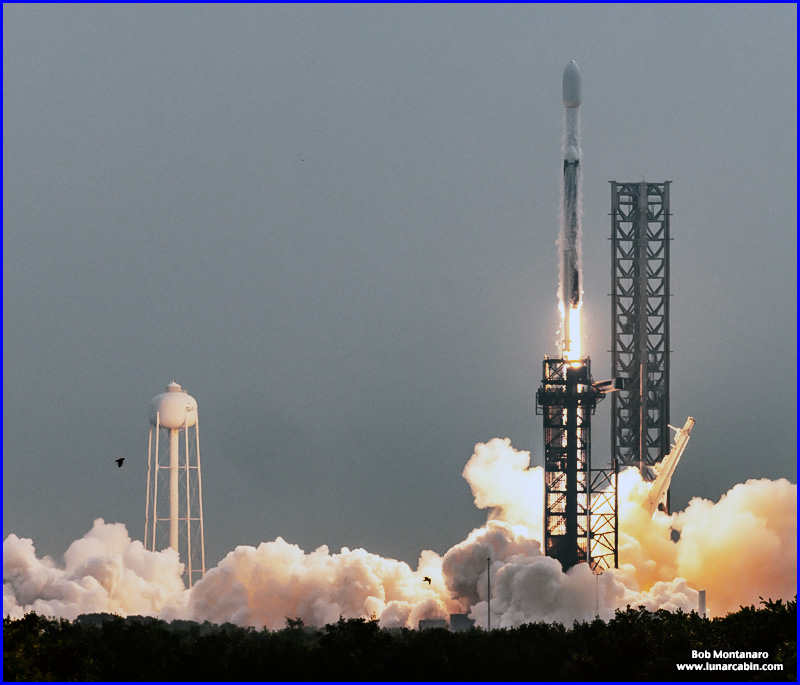 |
|
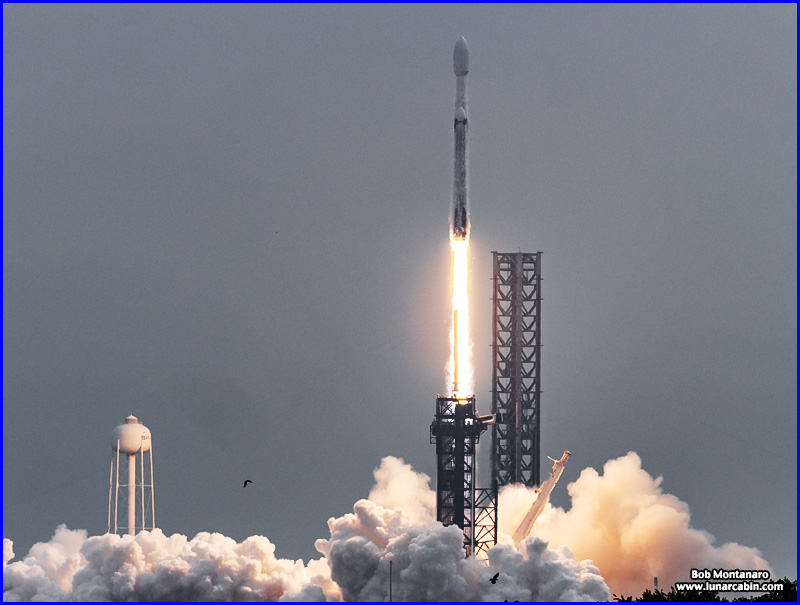 |
|
 |
|
 |
|
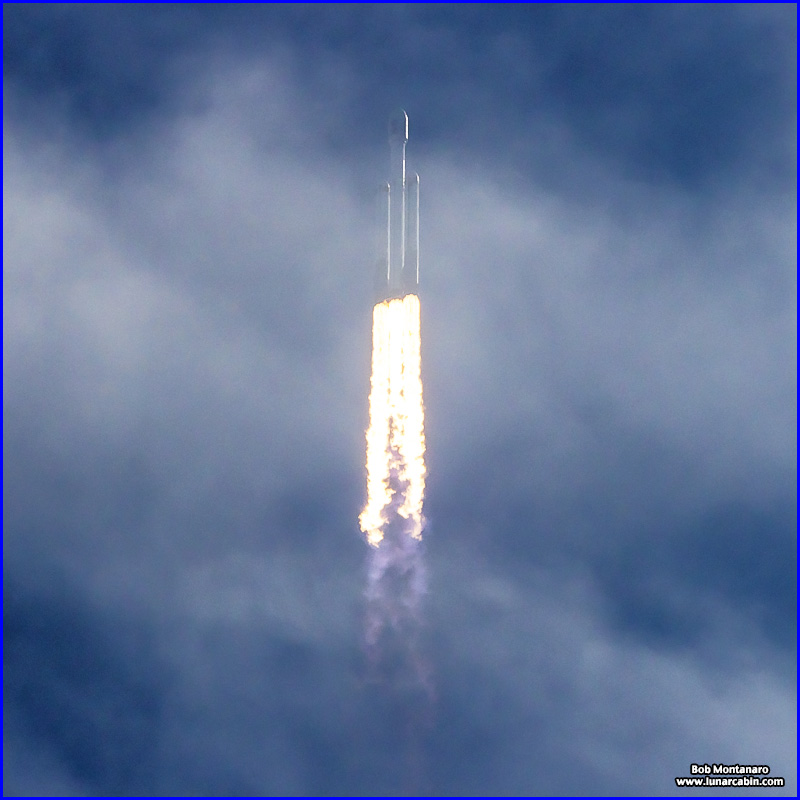 |
|
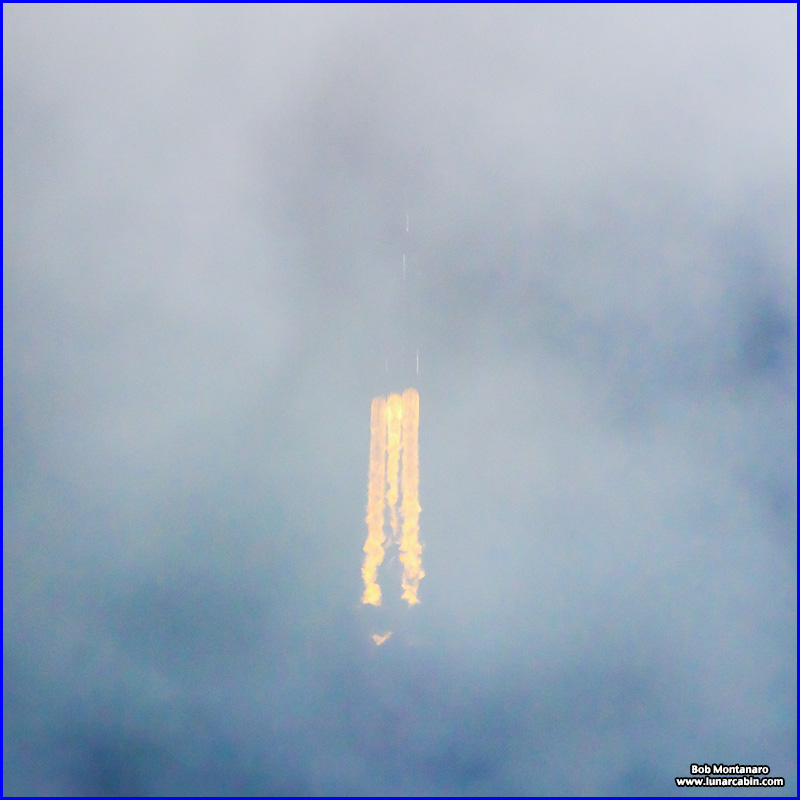 |
|
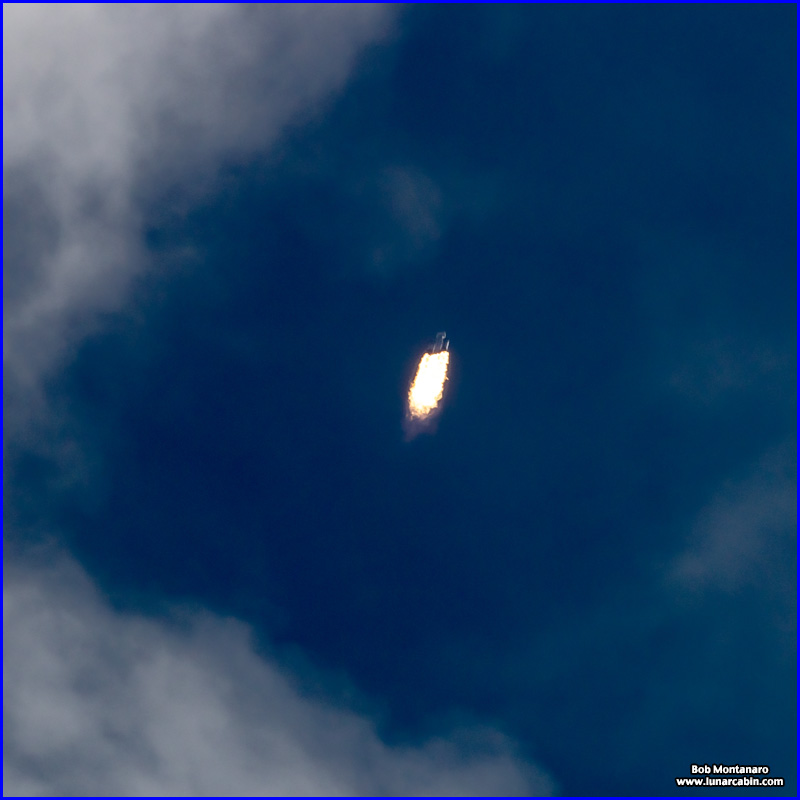 |
|
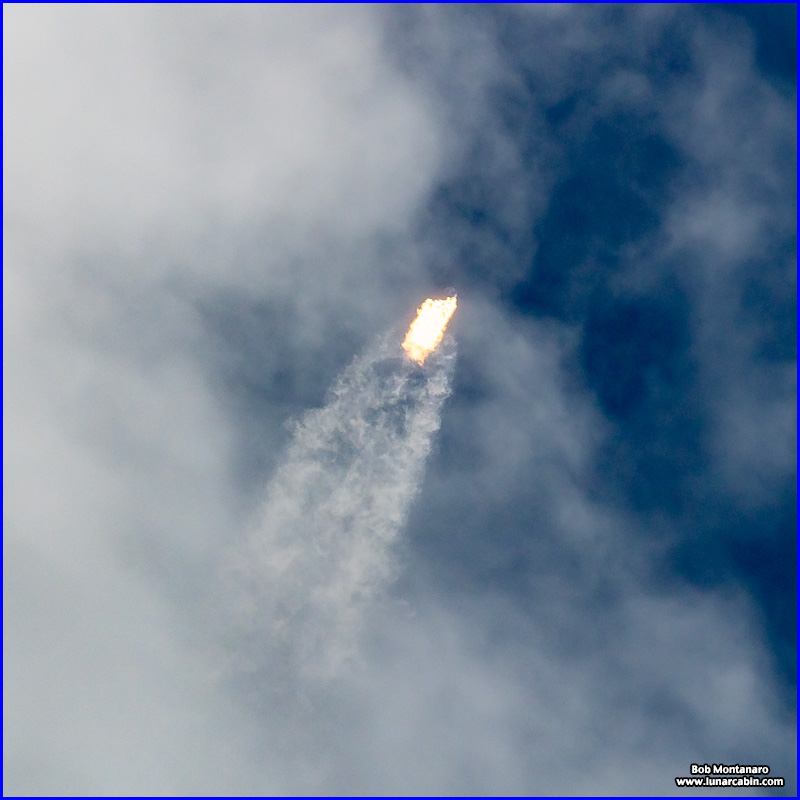 |
|
 |
|
 |
|
One of the two side boosters coming down for a landing. |
|
EXCERPTS FROM NASA/JPL/CALTECH/ARIZONA STATE UNIVERSITY MEDIA RELEASES |
|
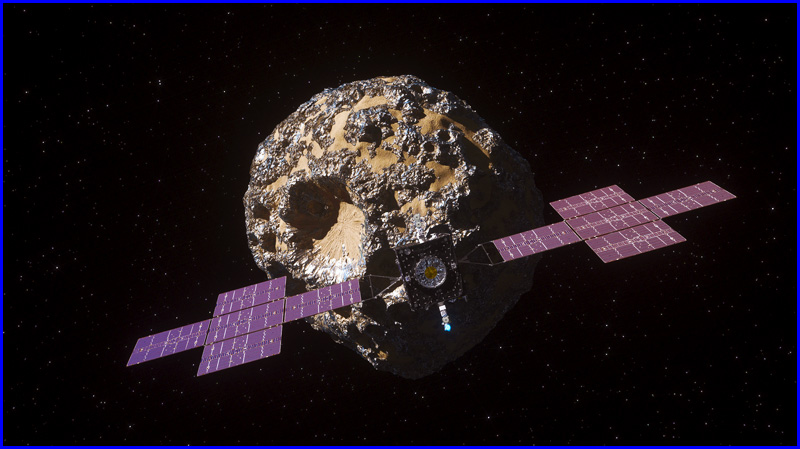 |
|
Psyche Spacecraft at the Asteroid Psyche (Illustration) IMAGE CREDIT: ARIZONA STATE UNIVERSITY |
|
This illustration, updated in April 2022, depicts NASA's Psyche spacecraft. The Psyche mission will explore a metal-rich asteroid of the same name that lies in the main asteroid belt between Mars and Jupiter. The spacecraft will arrive in [August 2029] and orbit the asteroid – also shown in this illustration – for nearly two years to investigate its composition. Scientists think Psyche may be the core of a planetesimal, one of the building blocks of the terrestrial (rocky) planets in our solar system: Mercury, Venus, Earth, and Mars. If so, it could provide a unique opportunity to study how planets like our own formed. But scientists are also prepared to be surprised and may find that Psyche is some other type of primordial solar system object never before studied. Arizona State University in Tempe leads the Psyche mission. JPL is responsible for the mission's overall management, system engineering, integration and test, and mission operations. Maxar Technologies in Palo Alto, California, supplied the spacecraft's high-power solar electric propulsion chassis. The development of the multispectral imager is led by ASU, in collaboration with Malin Space Science Systems in San Diego. |
|
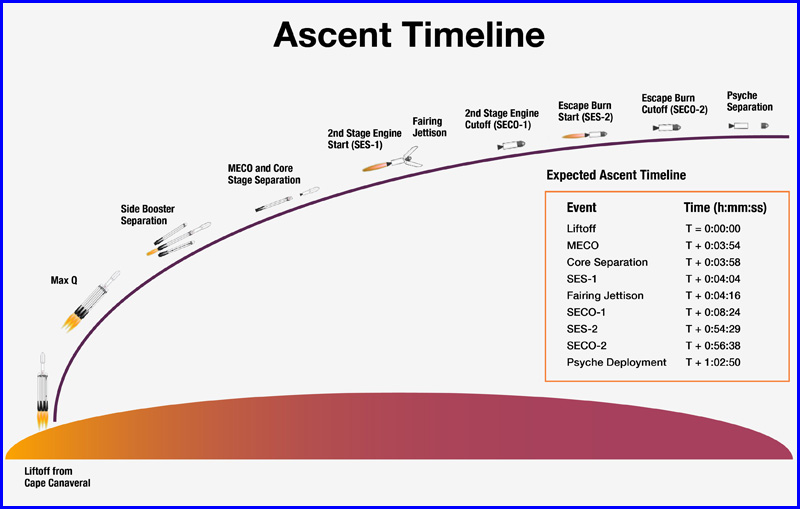 |
|
Psyche/Falcon Heavy Launch Ascent Timeline IMAGE CREDIT: JET PROPULSION LABORATORY |
|
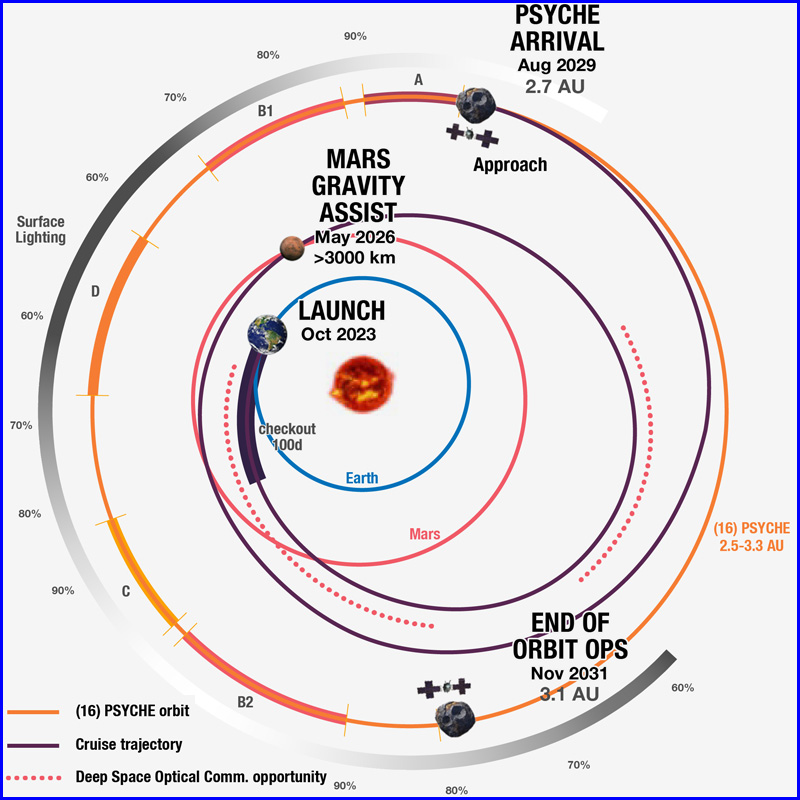 |
|
| Seen from above the plane of the planets in this illustration, the Psyche spacecraft takes a spiral path to the asteroid Psyche, with key milestones in its prime mission indicated. The test periods for the Deep Space Optical Communications technology demonstration are indicated with dots. After Psyche is captured by the asteroid’s gravity, it will begin orbits of different altitudes and with different science goals (named A, B1, D, C, and B2). IMAGE CREDIT: NASA/JPL/CALTECH | |
All contents copyright Lunar Cabin |
|